Our 25 Favorite Beers of the 2010s
Photos via Side Project Brewing, ABGB, Allagash, Russian River, Tree House Brewing Co., Jim Vorel, Paste Magazine Drink Lists craft beer
It’s a little mind blowing, to take a step back and consider just how many beers we must have sampled over the course of the last decade at Paste. God only knows how many breweries our drinks writers and editors visited, whether they were technically “on the clock” at the time or not. One thing I can say for certain, which only hints at the depths of our consumption: Between the Paste blind tasting of pale ale, IPA and DIPA alone this decade, we tasted more than 1,000 beers. And that’s across only THREE STYLES, people. How our livers made it to where we are today is a valid question.
To be honest, though, the fact that we’ve tried so many things has what you might consider a counterintuitive effect on our outlook on the craft beer landscape—the more we try, and the more we learn, the more aware we are of everything we haven’t tried. And that’s what makes the idea of a “best beers of the decade” list both daunting and ultimately impossible. We felt pretty good about assembling the 50 best breweries of the 2010s, but “best beers” is infinitely more subjective, and limited by the fact that no one has truly been able to sample a representative sample of everything that every great brewery has to offer. We can’t tell you, for instance, if something like Toppling Goliath Kentucky Brunch Brand Stout is truly among the best beers of the decade, because we’ve never had a chance to try it. And we’re in good company, there.
We have, though, had a chance to sample literally thousands and thousands of beers this decade, whether for our own pleasure, or for reviews, or in the course of countless blind tastings of various styles. Along the way, we’ve discovered breweries we loved, developed appreciation for new (and old) beer styles, and watched fledgling breweries grow into hyped powerhouses.
What follows are 25 of our own favorite beers of the last decade, chosen because they consistently delighted us, made our jaws drop, redefined our expectations for various styles, and ultimately put their stamp on the trajectory of the entire craft beer industry. Feeling that there was ultimately no point in comparing pilsner directly to barrel-aged imperial stout, they’re simply listed in alphabetical order, rather than ranked. Every beer on this list is one we adore—let us share them with you.
Austin Beer Garden Brewing Co. — Industry Pilsner

We’ve now written about this beer, and about Austin Beer Garden Brewing Co. (ABGB) so many times in the recent past that it’s starting to feel a little ridiculous, but judging from the comments we still receive from people who have never sampled their pilsners, the need to keep harping on it remains apparent. As we noted recently, in our list of the best breweries of the decade, ABGB is, bar none, the best brewer of Continental pilsners in the country today, winning both Paste’s own blind tasting of 134 pilsners, and winning GABF gold in three different pilsner categories (plus a fourth gold in the adjacent helles lager) within the span of only three years. That is, if you’re doing the arithmetic, five different huge blind tastings they’ve won, each with a different array of judges. This kind of thing doesn’t just happen.
Of all those pilsners, though, the one closest to our heart is the classic German-style pils Industry, which is more or less the ABGB flagship lager, flanked by the Czech pils and American-style pils. We crave this beer on a regular basis. To quote our own blind tasting:
Industry is simply the best American-made version of a classical German pilsner that you’re going to find in the world today—it blows the competition away, and in our mind it’s the blueprint for what a German pilsner should be. Assertively floral on the nose, it balances very light, crisp, crackery malt with a plethora of perfumey/floral hop notes and supple bitterness. But more than that, there’s a minerality to this beer that was almost unique among the field of 134—a hard to define quality that is probably related to water chemistry that was only replicated by a few of the other beers we tasted. To be honest, the only way you’re really going to understand is to hunt some Industry down and try it for yourself. And that’s absolutely something you should go out of your way to do.
The Alchemist — Focal Banger
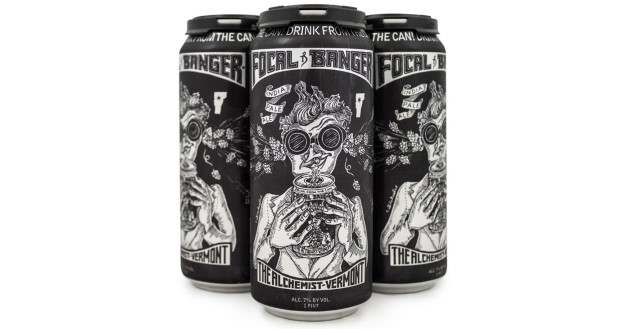
We discussed the genre-shaking contributions made by The Alchemist in our best breweries of the decade list, with most of those headlines revolving around the legend of Heady Topper DIPA and its role within the emergence of hazy/NE-IPA. As nice as a fresh can of Heady still is, though, count us among the vocal minority contingent that has always been more charmed by The Alchemist’s nearly as popular “single” IPA, Focal Banger. A few years back, in fact, it finished at #6 in a blind tasting we conducted of 247 IPAs, and we’re by no means alone—this beer has had a dedicated fanbase for years, and is almost as sought-after as the better-known Heady. Compared with its bigger brother, Focal Banger arguably represents the direction hazy IPA traveled in after the first explorations into the style—lighter malt profile, less of an alcohol presence and more juice-forward hop profile. As we wrote when tasting the style previously:
The Alchemist amusingly describes this beer as being “judiciously” hopped with Citra and Mosaic … which is rather like saying your average hurricane is “on the windy side.” Obviously, the truth of the matter is that Focal Banger is ludicrously hoppy, as one would no doubt expect from the little brother of Heady Topper. In terms of character, the two share some similarities, although Focal Banger is probably a little bit more directly hop-focused, with a correspondingly lighter malt profile. It explodes out of the glass with rich, complex aromatics: Dank, green hop resin, juicy pineapple and grapefruit candy, and a touch of exotic spiciness that you sometimes get out of these tropical varietals when used in massive amounts. There’s definitely a syrupy quality to this hop-rate, which candies the fruit impressions and cuts down a tad on drinkability … but man, what a rush that initial whiff can be. Whether it comes off as more strongly tropical or dank may come down to what flavors your palate perceives most acutely, but Focal Banger is clearly a treat for those who love big, big hops.
Allagash Brewing Co. — Coolship Resurgam

Given how fast the beer industry moves these days, it probably feels like we’ve been surrounded by dry, funky, spontaneously fermented cocktails of wild yeast forever, but it really wasn’t long ago that traditional Belgian beer styles such as gueuze were severely underrepresented in the states. Oh sure, you could go out to one of the better local beer stores and track down some of the classic brands from Belgium itself—beers that had existed in some form for a century or more—but American-made gueuze? We were slow to adopt true wild ales at all, much less the supreme dedication of attention and resources it takes to create a real gueuze, consisting as it does of multiple batches of spontaneously fermented ale, each aged for differing lengths. To attempt that kind of complexity, a brewery needs to plan their wild program out years in advance, which is why true gueuze is still such an undertaking even now.
That’s what made Allagash’s Coolship Resurgam such an accomplishment, when it first arrived at the beginning of the decade. It was a beer that expanded the very definitions of “sour ale” in the minds and palates of many who sampled it for the first time, and in doing so it helped unlock a new wing of growing beer geek obsession. It showed exactly how complex wild ales could be outside the perhaps friendlier confines of fruited sours, and it inspired us to write the following, back in 2015:
Totally unlike everything else in the lineup, Resurgam is all about the funk first and foremost—there’s so much unusual stuff going on in the nose of this beer that it’s difficult to wrap your head around it. It’s musty, leathery, barn-like and moderately tart, but also tropical and inviting. The beer is dry as a bone but wonderfully expressive despite this, with champagne-like carbonation that prickles on the tongue alongside moderate lactic sourness. The tapestry of funk is backed up by sour, woody flavors from the older segments of blended beer that have spent more time in oak. This is dry, funky, challenging, elegant beer that revels in its own complexity and doesn’t need a crutch of fruit flavoring to be a revelation.
Brew Gentlemen — General Braddock’s IPA
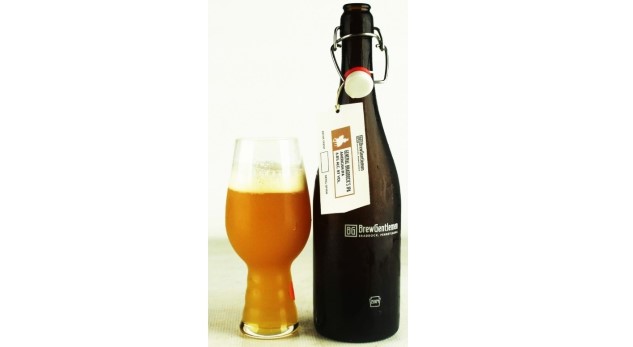
In the course of Paste’s blind tastings this decade, we discovered a lot of new breweries we’d never sampled before, but I think it’s safe to say that Braddock, PA’s Brew Gentlemen were among the best discoveries we made in the 2010s—shout out to r/beer for the initial recommendation, which came probably five years ago at this point. From the start, these guys were making lovely renditions of hazy/NE-IPA, and indeed were one of the forces that helped fully convert us to become fans of the emerging style—especially when this particular beer, General Braddock’s IPA, finished at #2 in a blind tasting of 247 IPAs. In the years that followed, we’ve watched the growth of Brew Gentlemen as they embraced new styles, built a burgeoning sour program and generally continued to kick ass in the PA beer scene. We’ve had a good number of excellent releases from them since, whether they’re barrel-aged barleywine or mixed fermentation beers, but in the end it’s hard not to come back to General Braddock’s. Straddling the edge between “resin/dank” and “full-on juice,” it became a go-to reference for several Paste tasters of what a properly executed hazy IPA was supposed to taste like—green without being overly vegetal, and “juicy” without the corresponding textural/hop burn hurdles.
As we wrote, the first time we tasted it:
This is an absolutely fabulous example of northeastern/New England IPA, and it just goes to show that they can come from anyone, whether or not there’s necessarily a line out the door … although I assume there soon will be for this beer, if there isn’t already. Beautifully aromatic, with a perfumed head that throws out waves of orange and grapefruit zest, it’s creamy, juicy and vibrant, but not particularly sweet. The mouthfeel is ridiculously soft and supple, velvety in texture and without any rough edges. On a second pass, hugely resinous, sticky green hops stand out more on the palate, prompting one taster to write “I absolutely am in love with this beer.” From another: “Mega smooth and juicy.” It’s damn near perfect, and it’s time for the world to know it.
Burial Beer Co. — The Separation of Light and Darkness

I once spoke to Burial co-founder/head brewer Tim Gormley about the brewery’s passion and dedication to what I called the “holy triumvirate” of craft beer styles: IPA, stout and saison. Those three styles tend to sum up Burial’s greatest accomplishments (although they killed it in our pilsner blind tasting as well), but even now, I still feel like people look at Burial and think of the brewery more in terms of the first two: IPA and stout. Those styles may keep the lights on (especially IPA), but the facet of Burial’s game that has always impressed me most is saison, which they’ve dedicated themselves to across numerous substyles that have experimented with various x-factors of yeast, grain and hops. Especially on the mixed fermentation side of things, there are few beers I’m more eager to try than a new Burial saison.
It makes sense, then, that Burial eventually took home the #1 spot in our blind tasting of 116 saisons with that might be their finest overall beer: The Separation of Light and Darkness. Initially clean fermented, this saison is aged on a mixed culture of brett and lacto for a full year, before being dry hopped with “a mild dose of complimentary hops.” This, Burial does with a subtlety that enhances every aspect of the mixed culture, resulting in a symphony of perfectly composed flavors. Each new release of this beer (including the 2018 one with peaches) has been fabulous. As we wrote then:
Separation of Light and Darkness, is a showpiece for both their brettanomyces and lactobacillus mixed culture as well as their skill with using hops as a finishing touch. Moderately tart, it’s quickly clear that this is a brett beer as well, as it puts forth a telltale funk that is earthy and almost slightly leathery. Of course, you’d really have to be searching to find either of those, because sweet-blooming citrus is the first thing you’ll get on the nose, which follows through onto the palate. Says one score sheet: “Amazing citrus aroma, and perfect acidity.” From another: “Funky, tart, citrus, peppery, wow.” From one more: “Just a clean, bright, hoppy, perfect saison.”
Creature Comforts Brewing Co. — Tropicalia IPA

Portland, OR beer writer Jeff Alworth recently observed something I’ve also been thinking about in 2019: A mental reframing of IPA evolution by those who have now become so accustomed to hazy, they’re beginning to forget just how it was that “NE-IPA”/hazy IPA first arrived.
It wasn’t, suffice to say, like a thunderstrike from the heavens where a style arrived fully formed. Beers like The Alchemist’s Heady Topper may have existed in this form, but their production was so limited that for many years, they were known only to a small cult. “Hazy IPA” as we know it today, in fact, is more salient a topic as the evolution of where IPA flavors were going in the mid-2010s, rather than IPA appearances. Which is to say, we had already been chasing after “juicy” for a while, before beers bearing that descriptor began to look cloudy—except for innovators like Maine Beer Co., whose lightly hazy IPAs could be considered a missing link here. Beers making strong use of emerging hop varietals such as Citra or Mosaic, however—I drank plenty from breweries like Chicago’s Half Acre in the middle of the decade that fit this bill—began to be sought after for their “juicy” fruit flavors, well before the normalization and association of “hazy” with “juicy.”
Cigar City’s Jai Alai IPA is a beer that certainly fits this bill, but given Paste’s Atlanta base, Creature Comforts Brewing Co.’s Tropicalia is perhaps an even better example. Like Jai Alai, Tropicalia came around at a time (2014) before cloudy looking IPAs had been embraced and normalized on a serious national stage. Tropicalia is not, and has never been hazy itself, but it captured some of the same qualities that were prized by other successful brewers who were paying attention to how tastes were changing—juicy, fresh-squeezed orange, hints of stone fruit and corresponding lack of bitterness that really marked a deviation from West Coast IPA. It’s a phenomenally easy to drink IPA with a hint of residual sweetness, but a focus on clean hop flavors that are backed up by a tiny bit of toasty malt for just the barest degree of balance—a quality now often missing in modern hazies. Tropicalia, and a handful of other beers like it, represent not only an important step in IPA evolution, but also a rebuke to the idea that IPA simply went from “bitter and dry” to “hazy, juicy and sweet” one day … while offering an easy to love middle ground between extremes.
Firestone Walker Brewing Co. — Anniversary Ale
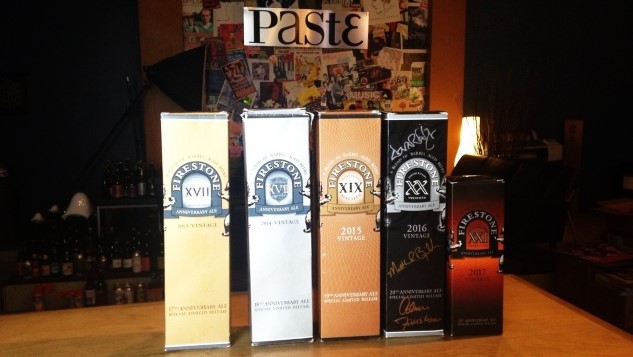
There are a lot of different beers we could talk about for Firestone Walker, our pick for the best overall brewery for the entirety of the 2010s. We could go on about the pitch-perfect qualities of Union Jack, a style-defining IPA if there ever was one, and more vital than ever in a hoppy beer climate that has pivoted so hard toward juicy and sweet. Or we could discuss a pilsner like Pivo, instrumental as it has been in increasing both the conversation around craft pils, and awareness of the idea of “Italian-style” pils. Or, we could pick a single barrel-aged behemoth like Parabola, or its variants, or deep dive into the entire Barrelworks program to single out one of those beers. But it seems to us that the best way to summarize the greatness of Firestone Walker is to instead choose the entire series by which they distinguish themselves every year: Firestone Walker Anniversary Ale.
We were once fortunate enough to assemble a five-year vertical of this particular beer, and it was a showcase for everything that big, barrel-aged beers can be. It’s a constantly fluctuating testament both to the skills employed by Firestone Walker brewmaster Matt Brynildson, and the company’s own humbleness. As in: They don’t design each year’s anniversary beer themselves. Rather, Firestone taps the blending experts of its own local wine community—tasters who have more experience in flavor blending than almost anyone in beer could ever claim to have—and instead lets competing teams of those blenders assemble various entries, which are then blind tasted by the whole, assembled group. The winning entry becomes that year’s Anniversary Ale.
This wouldn’t work, of course, if Firestone didn’t have such an incredible roster of barrel-aged bruisers to draw upon. But between the likes of Bravo, Parabola, Stickee Monkee, Sucaba, Helldorado, Velvet Merkin and various alternate barrel finishes, it makes for a blend that can be radically different from year to year, while still retaining both decadence and astounding complexity. I can’t think of a yearly release we look forward to with greater anticipation, even though every year is a new experiment.
Fremont Brewing Co. — Bourbon Barrel-Aged Dark Star
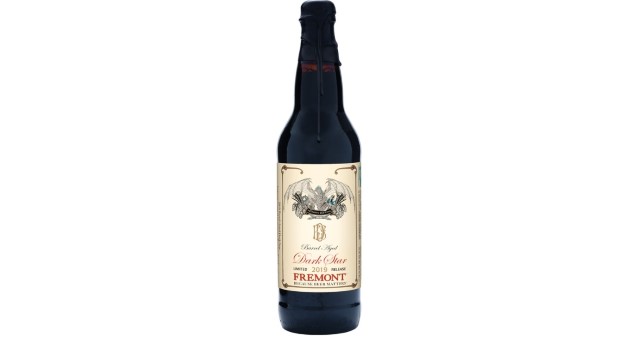
I sort of shudder—my liver sympathetically gives a little quiver as well—to think of how many barrel-aged imperial stouts I must have sampled this decade. In one blind tasting alone, we tried 144 of them, ultimately settling on this very beer as our champion. Among an incredible lineup of stouts aged in every kind of barrel (and boasting every kind of adjunct) imaginable, Fremont prevailed with one that at first glance sounds relatively simple: A bourbon barrel-aged stout. No other flavorings. No adjuncts, besides the use of flaked oats. But ah, this beer is actually nowhere near as simple as you might expect.
But first, a word on Fremont: Of all the breweries on our list of the best brewers of the decade, we knew there would be a contingent of folks out there saying “wait, really?” to Fremont landing in the #3 spot overall. The reason is simple: They have always been very consistently undervalued, but have always performed incredibly well in Paste’s blind tastings, which has steadily raised our esteem for this particular brewery to great heights. We have often theorized that Fremont’s commercial success, size, consistency, subtlety and lack of flashiness are factors in why their outstanding beers are consistently viewed as simply “good” rather than “world class” by many beer geeks, but you’ll have to take our word for it that they consistently destroy competition in blind tasting scenarios. And this beer—BBA Dark Star—has been the most consistently transcendent barrel-aged imperial stout we’ve sampled throughout the 2010s. Like other subtle masterpieces from Fremont, it is one of those beers that is so much more than the sum of its parts.
Chalk up some degree of the credit to Fremont’s above-and-beyond blending strategy for this beer, which incorporates portions of 24, 18, 12 and 8-month bourbon barrel-aged stout into a final blend, essentially constructing itself like a Belgian gueuze, which supplies a breadth of flavors that similar beers are often lacking. It finds synthesis with its barrel influences, not trying for “maximum wood” or “maximum whiskey flavor,” but rather a happy medium between them, coupled with one of the best mouthfeels we’ve ever come across in the genre. With Fremont beers, it was often those little things, like texture, that put them over the top in blind tastings, and Dark Star is a premiere example. As I wrote before:
On the nose, this beer is burly, boozy but ultimately inviting. The barrel comes through in a big way, throwing waves of rich caramelized sugar and vanilla custard, along with solid roast. The oatmeal in the grist helps contribute to a luxurious, silky texture—as we noted earlier, each Dark Star was among the best of the tasting in terms of mouthfeel. On the palate, deep, rich molasses sweetness gives way to charred oak, vanilla and maple syrup, and what one of the tasting sheets refers to as “velvety heaven.” It’s simply a gorgeous beer, and one that shows a barrel-aging program that has invested years into making the best possible stout that they can.
Funky Buddha Brewery — Maple Bacon Coffee Porter
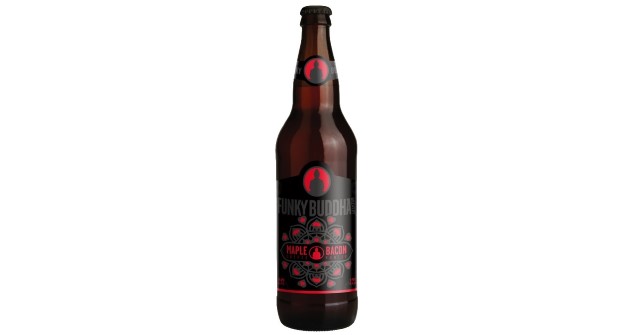
I once referred to this beer in writing as “a great case of truth in advertising,” and I stick by that. Florida’s Funky Buddha, as we also discussed on our list of the best breweries of the decade, have long shown themselves to be one of the genre’s preeminent masters when it comes to the vague idea of “flavored beer.” They’ve never met a gimmick they didn’t like, but they have a confounding ability to pull off flavor combinations and ideas that sound terrible the first time you hear them. Whereas we’ve steadily become disenchanted with many instances of completely unbalanced pastry stout or other heavily flavored beer styles, Funky Buddha often remains a rare exception to that rule—even in the case of a beer like Maple Bacon Coffee Porter, they manage to do these flavors in a way that makes balance at least something of a priority.
Because really, if we saw the words “maple bacon coffee porter” (no longer that odd a concept, here in 2019) at most places, what we’d be expecting would be something that tasted like hazelnut coffee pods and liquid smoke. Funky Buddha’s version, on the other hand, playfully evokes the “complete diner-style breakfast” that is promised, and does it in a way where you don’t mind drinking a full serving. It rightfully deserved all the attention it received when the brewery developed it at the beginning of the decade, and the barrel-aged version, Morning Wood, is likewise fabulous. As we wrote when tasting it previously:
This beer tastes like everything you see on the label, and then some. Coffee is most prominent; rich, sweet and intense. Maple follows up after that, combining with the doughier aspects of the malt profile to evoke an undeniable image of syrup-covered waffles. “Bacon” is wisely the most subtle of the three, but it manifests in the form of a thread of savory smokiness running through the whole affair. This is unabashedly dessert beer, of course—big, decadent and nowhere near “sophisticated”—but god damn, is it satisfying. It’s a beer that checks so many boxes and cravings, all at once. It’s something you might expect to hate based on the label, but grudgingly have to admit is awesome. You also might not want to drink an entire glass, but on a per-ounce basis, this beer is ridiculously delicious.
Great Notion Brewing — Ripe IPA

Great Notion was the youngest of all the breweries to squeak onto our “best of the decade” list, given that we were primarily trying to recognize companies that had impacted large portions of the 10 year period, but with good reason—when you place #1 in the largest blind tasting that Paste has ever conducted, that’s the kind of cred you can’t easily dismiss. This is that beer: Ripe IPA, which triumphed in a blind field of 324 IPAs to take the crown. It was an indication that the Portland, OR brewery had definitely ascended to the top of the hazy IPA scene, and they haven’t backed down since.
Although Great Notion unsurprisingly plays with all hop varietals, as pretty much all the modern IPA factories tend to do, we should perhaps note that Ripe is a 100% Citra beer, just one of many we’ve enjoyed over the years. A critic might say at this point that the exclusive use of Citra is almost cheating when putting together a popular IPA, and it would be a bit hard to argue the point. But everyone loves Citra, ourselves included—it has to be the most universally appreciated hop varietal, right? Here, it delivers an IPA that hits all the best high notes of the NE-IPA/hazy style, while avoiding all of the potential pitfalls, from our nemesis “hop burn” to the overly vegetal unpleasantness that comes from trying to push the pursuit of juiciness too far. Ripe manages to be both decadent and drinkable, which we always appreciate. As I wrote previously:
Ripe is simply everything that you want in a NE-IPA. Loaded up with Citra, it presents a hugely tropical hop nose, with notes of mango, papaya, pineapple and more musky, exotic fruit notes that are difficult to put your finger on. Pineapple juice is huge on the palate, in an initial sweet rush that is particularly decadent, before a subtle bitterness arrives to keep things from getting out of hand. Texturally, it has the softness you want and a degree of chewiness, but it doesn’t feel choked by excessive yeast or hop particulate. One taster who was particularly taken with Ripe declared in his notes that it was “proof text for the style” as a result. Drinking fresh Ripe is a sinfully delicious experience, worthy of a pilgrimage to Portland.
Green Cheek Beer Co. — Radiant Beauty IPA

If there was one factoid I wish I could simply impress upon all other beer geeks, it would be this: Everything that can be done, flavor-wise, within the confines of hazy IPA can also be done in clear IPA. Texture may be another matter, but if you just want those over-the-top juicy, incredible fruit flavors, there’s no reason you can’t get them out of a beer that is crystal clear. How do we know? Well, we’ve sampled Green Cheek Beer Co.’s Radiant Beauty, and if they can do it, you probably can too.
These guys make a lot of different beer styles, and to be sure, they make plenty of hazy IPA because it’s what the market wants right now, but I’ll go on the record saying that I think they’re making the best clear IPAs in the USA right now. Nothing else I’ve tasted in recent years (with a few exceptions from breweries like Half Acre) is in the same ballpark of delivering those sought-after juicy flavors, while also retaining the crispness, dry finish and modicum of bitterness you want in a clear IPA. Beers like Radiant Beauty are a revelation—all of the fruit impressions, delivered with beautiful clarity, none of the sticky residual sugar, and enough bitterness to compel your next sip. If I could have a fridge that magically re-stocked itself with a single beer every time you emptied it, Radiant Beauty would honestly be an ideal selection. As we wrote in the blind tasting of 324 IPAs, where it ultimately placed at #3:
This is the absolute best clear IPA we sampled in this blind tasting, and it hits the palate with a singularity and clarity of purpose that was unmatched anywhere else—something we noticed when we praised the same beer a month ago at the Firestone Walker Invitational. One of the score sheets describes its flavors at one point as possessing “piercing citrus,” and that’s really the word for this beer—it’s a bright, sharp spearhead that cuts you to the bone with brilliant hop flavors. Hugely tropical and bright on the nose, it possesses intense notes of grapefruit zest, pineapple juice and resin, with a notable amount of bitterness (at least in comparison with most of the finalists). It’s crisp and extremely drinkable while still being informed by everything we’ve learned about using hops in modern IPA brewing. This beer is the ideal clear IPA—assuming you really love a big charge of fruity American hops. And we do, so there.
Hill Farmstead Brewery — Arthur

There’s certainly no doubt that Hill Farmstead was one of the most deeply influential American breweries of the 2010s, making lasting contributions toward helping establish the idea of a “destination brewery,” even as it was ever on the forefront of a variety of styles, from farmhouse ales to IPA. Pretty much every single beer they make is well regarded, even if it’s in a style that many drinkers find mundane these days, such as pale ale or porter. In the hands of Hill Farmstead, those become beers that the geeks still seek out, which is certainly a rarity as this decade comes to a close.
Personally, I wish I could have sampled more of Hill Farmstead’s wares throughout the 2010s, as our opportunities to get their beer into Paste blind tastings in Atlanta were always limited in nature. Still, we did get to drink them from time to time, and they always made an impression. In the end, it’s the farmhouse ales we associate with the brand most indelibly, especially the family-inspired pair of Anna and Arthur. The latter, essentially HF’s flagship saison, is the sort of elegant work of subtle beauty you would expect from the brewery after reading about them for so many years—the kind of beer that fits any occasion and can pair with anything, as the best saisons often can. That this is a readily available beer from HF speaks to just how high they’ve elevated the quality level of all their offerings. As we wrote when tasting it:
This is a really beautifully balanced farmhouse ale that make significant use of both Euro and American hops, and delivers a profile that isn’t “challenging” to tasters but inherently, universally enjoyable. The wonderfully soft, velvety texture is the vessel for big citrus flavors of lemon and orange peel, with more than a touch of residual sweetness. An ever-so-calculatedly small level of tartness enhances the “juicy” impression of those citrus flavors, as well as drinkability, in a way that one score sheet describes as “checking a lot of boxes.” In short, this wasn’t the brettanoymces funk bomb that I was subconsciously expecting, but much more of a refreshing, crowd-pleasing saison that most any brewery would kill to have as a year-rounder.
Jackie O’s Brewery — Spirit Beast
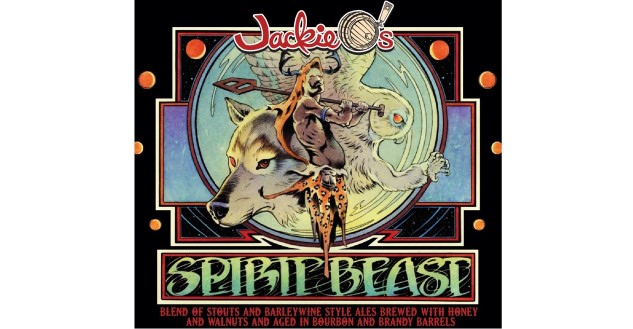
Time to own up to something: I screwed up by not having Jackie O’s on our list of the 50 best American breweries of the decade, realizing only after it had gone live that I’d forgotten to include one of the breweries that most consistently knocked our socks off in a variety of blind tastings. Someone was bound to get overlooked, and I admit it: That one was on me.
I guess it’s sort of fitting, in a way, though: Jackie O’s has always had a tendency to be overlooked, likely owing to its humble brewpub origins, even as they established themselves as one of the very best all-around breweries in the Midwest, especially in the realm of barrel-aged beer. Many are the times we walked away very impressed by Jackie O’s entries in Paste blind tastings, but never moreso than when Spirit Beast finished #2 out of 144 barrel-aged stouts.
Although really, even calling this beer “stout” is a bit of a stretch, because Spirit Beast encompasses practically the entire barrel-aged universe, being a blend of almost every other barrel-aged bruiser that Jackie O’s produces, from barleywine and imperial stout to Belgian quad or “imperial amber.” They all surrender themselves to form Spirit Beast like robots coming together to create Voltron, and the results are staggeringly complex—one of the decade’s best beers to nurse over the course of hours as it warms up and changes in your hand. As we wrote then:
The beer presents with a startling array of different flavors. Vinous and slightly winey, it’s also redolent in cocoa and dark fruit notes of plum and currant. Booze is moderate and makes its presence felt, but that can’t detract from an absolutely lovely, silky texture and extremely full body. Residual sweetness somehow manages to be only moderate, exactly where it should be for maximum effect. Pretty much every single tasting sheet contains the word “complex” at some point. This is a beer you need time and focus to dissect. It demands you pay attention; it would be impossible to idly drink this.
Jester King Brewery — Atrial Rubicite
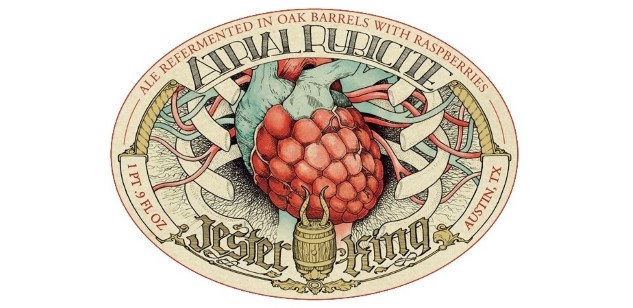
This should really be no surprise—I once wrote a veritable paean dedicated just to this beer and its apricot counterpart, Aurelian Lure. Although it sort of feels like the wild ale game in 2019 has evolved beyond the relative simplicity of “it’s a sour ale with ___ fruit,” with breweries more frequently attempting to outdo each other in terms of complexity and funk-derived qualities, there’s no denying how deeply satisfying a beer like Atrial Rubicite is to drink, no matter what year it is. This style of beer—a dedication to everything one might enjoy about the qualities of a fruit, like the humble raspberry—is something that Jester King has historically done perhaps better than anyone. Plenty of breweries over the years have produced “beer that tastes like raspberry!” Few have transmuted raspberry into such a pleasing form that is both true to the fruit and true to the wild yeast program that gave birth to it. That kind of beer never goes out of style.
A key, of course, is the truly ridiculous (even now) amount of raspberries that go into production, which approaches levels that a cynic would no doubt call irresponsible. At 4 to 5 pounds per gallon, it works out to almost 100 individual raspberries spent to create any given 500 ml bottle of this beer. Only at that point can you really consider the immensity of the fruit presence here, which is so all-encompassing that the very foam is a luminous magenta. The fact that it tastes like anything else besides raspberry (and it does) is really sort of remarkable, but Jester King’s house cocktail of yeast and bacteria shines through all the same, delivering a supple tartness that is perfectly dialed in to where you’d want it to be. As I wrote in the past:
Atrial Rubicite, on the other hand, is perhaps Jester King’s most sought-after beer; a liquid paen to the glory of fresh raspberries that delivers intensity of raspberry flavors while still avoiding the cloying, artless nature of more syrupy raspberry beers. An initial rush of juicy raspberry coats the tongue with a velvety smoothness and jammy red fruit flavors. The brewery’s marketing copy brags of a beer “devoid of sweetness,” but that’s not entirely true—compared with the Aurelian Lure there is certainly a natural sweetness brought forth by the fresh fruit that is wholly necessary, a vital dimension in a beer that still closes with an elegant, dry finish.
Live Oak Brewing Co. Hefeweizen & Urban Chestnut Brewing Co. Schnickelfritz

You’ll have to hear us out on this one, when we say that we don’t drink a lot of hefeweizen these days, but when a truly great hefe comes along, it’s a transcendent experience. It’s just that we so rarely come across that sort of hefe—beyond the fact that there are so few craft breweries producing them these days, the majority of German-style wheat ales we run across tend to come across as problematically unbalanced. Perhaps it’s a matter of yeast management, or fermentation science; we couldn’t say for sure—what we can say is that all too many hefes we sample today throw themselves entirely at fruit flavors, or are overrun by clovey phenols, or are drowning under some kind of additional spice or fruit flavoring. It’s a style that consumers have lost their appreciation for, and we submit that part of the reason is that there are so few great benchmarks around, outside of the imported German classics.
There are, however, two that we adore, and in the interest of making sure they both get onto this list I decided to combine them into one entry—Texas and Missouri, sharing the title. Both Live Oak Hefeweizen and Urban Chestnut Schnickelfritz encapsulate the flavors you want in a beautifully balanced hefe, from their doughy malt profiles, to the deft balance between banana esters and spicy phenols, and the subtle thread of vanilla richness that ties it all together. It’s no wonder the two of these beers placed #1 and #2 in our blind tasting of 59 wheat beers. Those entries sum it up:
Schnickelfritz is a prototypical German hefeweizen that differentiates itself by being just a bit cleaner, crisper and brighter than almost all the other American examples. Banana and clove are perfectly in harmony and balance on the nose, in a way that you couldn’t mistake for any other beer style. Crisp, grainy malt is fairly unobtrusive, and there’s a slight, almost vanilla-like sweetness rounding everything out. In our eyes, this is more or less perfection.
Live Oak Hefe is very authentically German on the nose—you would almost certainly think it was imported, rather than American, thanks to the pronounced, nuanced clove phenol in particular, and a touch of bubblegum fruitiness. Beyond that, banana bread and spice assert themselves in a gentle way, blending with a creamy, bready malt backbone. It’s exactly what you would describe if someone was asking you to tell them what the style of hefeweizen was all about.
Maine Beer Co. — Lunch IPA

As we touched on in the earlier entry on Creature Comforts Tropicalia, the idea that “hazy IPA” simply arrived one day as a new beer style seems to be an increasingly common fallacy. Rather, hazy IPA as we know it today is the evolution of cutting edge experimentation by a handful of pioneering East Coast breweries, from the likes of The Alchemist and Lawson’s Finest Liquids to the geniuses over at Maine Beer Co., who didn’t simply go from “clear” to “opaque” overnight. The latter brewery, most perfectly represented by the beloved IPA known simply as Lunch, is the closest thing out there to a time capsule that perfectly captures a moment in IPA transition—a preserved missing link between styles. Just look at how the brewery itself described Lunch upon arrival: “Our ‘East Coast’ version of a West Coast-style IPA.” That is precisely what Lunch is. Mirroring many of the same flavor characteristics as classic West Coast IPAs, Maine built a house style that was just a touch less dry, somewhat less bitter, a bit more aromatic and inviting, and lightly hazy to boot. It was a refinement in what was already popular within the style, rather than an outright rejection of the past.
As a result, someone deeply immersed in hazy IPA in 2019 is almost unlikely to know what to make of Lunch, if they’ve never seen it before. There’s no denying that there’s a hazy quality to a pint of this beer, but it simultaneously looks nothing like the tan-colored glasses full of hop particulate and suspended yeast to which so many of us have become accustomed. Nor do classic MBC IPAs like Lunch or Another One possess the thick-as-soup, ultra chewy texture that is currently sought after in IPA—they were never meant to be decadent experiences. Rather, Lunch is supposed to be effortlessly drinkable, while still packing a bright, nuanced profile of citrus, tropical, resinous and floral hop impressions. It’s perfectly calculated for easygoing enjoyment, displaying the subtlety and restraint that made Maine Beer Co. one of our top 10 for the decade. As we wrote about Lunch, way back in 2014:
Where Another One is very light, refreshing, intensely citric and juicy, Lunch is much more subtle, almost more in line with the same qualities that we praised in Breakside IPA. It’s awash in all kinds of different hop flavors: Citrus, pine, floral and tropical fruit (especially grapefruit) all at once, but at the same time it’s also very balanced by a light caramel sweetness. It’s almost like a miniaturized DIPA. It feels like something that a lot of time, effort and careful consideration went into designing.
Perennial Artisan Ales — Abraxas
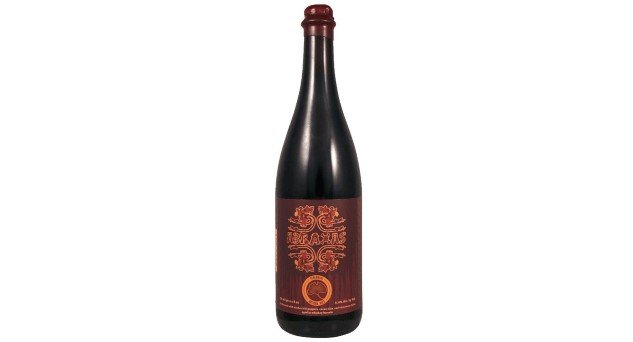
I must admit that this may be one pick where a degree of personal nostalgia creeps into the evaluation process. I was lucky enough to sample Abraxas very early indeed, being a random writer on hand who just so happened to be passing through St. Louis on the day that Perennial Artisan Ales was hosting its soft opening, way back in 2011, as the St. Louis beer scene was whirring to life. And already, at that point, it was clear that the brewery was something special, with this imperial stout as a prime example of their deft touch in approaching beers that boast huge flavors.
“Mexican hot chocolate”/“mole” became an especially common complementary flavor profile for imperial stouts throughout the 2010s, and Abraxas certainly played its part here in building hype for big stouts that were awash in cinnamon, chiles and vanilla. Unlike so many of its truly saccharine imitators, however, Abraxas never struck us as possessing an unearned richness or hint of artificiality. It’s always been an over-the-top, people-pleasing beer in some respects (especially via cinnamon), but its use of ingredients like ancho chiles was always an overlooked but vitally important aspect of the flavor profile, contributing that particular combination of dark fruit/bitterness/subtle heat that plays so well with the sweeter, richer dimension of the underlying stout. If more pastry stouts had this kind of balance, we’d be a lot less leery about ordering them. As we wrote before:
This sought-after beer from Perennial Artisan Ales revels in the whole “Mexican hot chocolate”/mole flavor profile that has become popular for imperial stouts in recent years, and is regularly considered one of the best of that subset. I say “revels” because there’s nothing subtle about the spicing of this beer; its cinnamon in particular is big, fragrant, sweet and in your face, making the beer smell like a brown sugar cinnamon Pop Tart that is fresh from the toaster. Rich dark chocolate is present in equal measure, and the chiles slowly come through on repeated sips with a final, lingering touch of (very mild) heat. When this beer was first released in 2011, it may have been a complete novelty to drinkers trying it for the first time, but a glance through this tasting will show that there are many other stouts in the same mold. What ultimately ended up setting Abraxas apart this time wasn’t necessarily the spice-heavy flavor profile, but the wonderfully silky mouthfeel and full body that amplify the sense of decadence in drinking it. Abraxas remains exemplary dessert beer; pair with vanilla ice cream or freshly fried churros.
pFriem Family Brewers — Helles
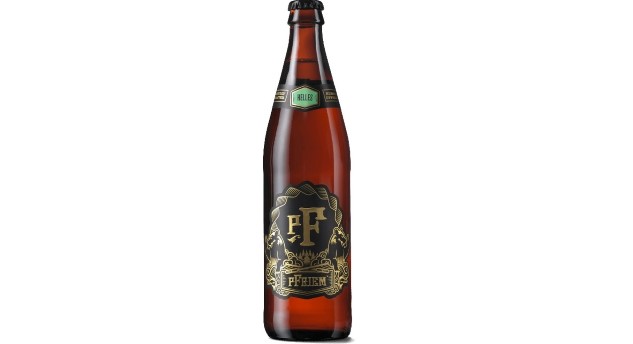
Of all the breweries to consistently perform far above average in Paste blind tastings, pFriem has perhaps done it with the greatest degree of stealth and quiet dignity. I don’t believe they’ve ever placed #1 in a tasting, but they’ve been as close as #2, as they were with this particular helles in our blind tasting of 102 craft lagers. How do these guys consistently perform so well without making a lot of waves? Well, it might be the nature of the beers they’re making. pFriem has managed top 10 finishes in “lager,” “pilsner” and “kolsch,” and that says it all right there—they make a whole lot of beer styles well, but the ones they arguably make best are styles that don’t exactly generate what you’d call “hype” in the beer geek community. Like other breweries such as St. Louis’ Urban Chestnut, they have to settle for being regional favorites of everyday drinkers, rather than having people standing in line for sticker-wrapped cans of helles and pilsner. And you know what? That is more than fine by us.
pFriem Helles was a particularly impressive showing in a tightly contested field of lagers, shoving its way to the top by demonstrating a “center of the bullseye” approach that didn’t throw itself too strongly in the direction of any of its influences. Some helles have a tendency to devote themselves entirely to biscuity/toasty malt, while others trip up by being so hop-focused that it’s impossible to distinguish them from pilsners, but pFriem’s resides in the delicate region between blandly malty and style-blurringly hop forward. It’s a testament to the perfect drinkability of the style, and pFriem’s mastery of lager and lager-adjacent styles. As we wrote then:
Their helles lager is the kind of well-balanced and “platonic ideal” beer we’ve come to expect, evenly splitting the lines between classical German inspiration and American adaptation. Crispy grain notes lay a foundation on the palate, equaled by deft noble hop balance, which trend slightly toward spicy flavors. It falls right in the middle in terms of assertiveness, ABV and profile—quintessentially lagery. One taster’s notes even begin with the words “classic lager.” That’s what pFriem delivers.
Russian River Brewing Co. — Beatification

In the same mode as the already mentioned Allagash Coolship Resurgam, Beatification is one of those beers that helped to build appreciation for an entire corner of the beer world within the U.S. True wild ales and spontaneously fermented beers had always been available in limited quantities as imports from Europe, but it took American drinkers being exposed to the joys of brettanomyces by the likes of Russian River for the rank-and-file beer geeks to truly embrace these beers as an “American” art form and not just a Belgian or European one. I can’t claim to have been there for it, but I can only assume that this was a day-by-day struggle, conducted at the taproom level, to expose drinkers to flavors they had only ever associated with other corners of the alcohol world (wine, in particular) in the past.
The beauty of Beatification, a 100% spontaneous beer that is fermented entirely in wine barrels, lies in its utter simplicity and impermeability, once the drinker gets past its wild origins. Russian River will never change Beatification, and they’ll never have to. It will never get any less delectable than it is now; nor will such a pure, simple concept ever be capable of “going out of style.” A decade from now, U.S. breweries will still be making beers just like it. Perhaps they’ll even be close to matching it at that point? Anything is possible.
Beatification, like other beers in its mold, is structured around showcasing just how much complexity can exist in ingredients and structure we tend to think of as mundane. Its base recipe is likely on the simple side—some base malt, a handful of hops; the details are ultimately unimportant. What is important is the transmutation those humble ingredients undergo when exposed to wild yeast and native bugs in the wine casks in which they are aged, imbuing what might have once been a nondescript “blonde ale” with layers of funk, fruit, spice, tartness and a sheer complexity that was utterly unknown to the majority of beer drinkers at the turn of the decade … and hey, I was absolutely one of them. At least we learned fast, right?
Side Project Brewing — Saison du Blé

It’s Saison du Fermier that is typically considered the “flagship” farmhouse ale, if you will, of St. Louis’ lauded Side Project Brewing, but its slightly smaller brother Saison du Blé was the one that edged it out to capture our hearts (and a #1 ranking) the first time we ever blind tasted saisons. The two beers are similar, but veer in slightly different directions, with du Blé styling itself as perhaps a little bit more approachable and texturally soft, accurately described by the brewery as “fluffy” due to the proportion of wheat used in its mash. That pillowy, doughy wheat character merges beautifully with the house cocktail of brettanomyces and lactobacillus, and an immediate classic was born. Each batch of Saison du Blé—and all Side Project beers, really—obviously varies a bit, as Cory King continues to tinker with the art of fermentation and propagation (few do this anywhere close to his level), but you can be certain that any given batch will be outstanding in its own way.
Today, the most sought-after beers from Side Project have a tendency to be massive stouts, whether members of the Derivation family or otherwise, but for our money there’s no more satisfying beer coming out of Missouri than their humble farmhouse ales, which perhaps most closely illustrate the complexity and artistry King was seeking in the first place. As we wrote back then, when tasting this beer for the first time:
Saison Du Blé is the smaller and slightly more traditional of the two farmhouse ales that Side Project submitted for the tasting, with a portion of wheat in the grist and a bit less sheer tartness than the Saison Du Fermier. There’s certainly no shortage of flavor, however, with a panoply of fruit notes that practically defy description—sour apple, white grape, pineapple, grapefruit and more, all singing in concert. The tartness enhances fruit flavors but isn’t what one would call “sharp”—rather, it’s velvety smooth and supple, allowing you to get lost in the complexities of flavors.
Sierra Nevada Brewing Co. — Hazy Little Thing

It’s kind of crazy to think that Sierra Nevada’s Hazy Little Thing is only now just approaching its second birthday. For any beer to have such a massive effect in transforming the national beer market/consumer taste in the course of a full decade would be impressive. To do what this one has done, in less than two years? Almost impossible.
To really appreciate the greatness of Hazy Little Thing, though, you sort of have to take a step back as a beer geek—to pull yourself out of the mindset of the guy waiting in line for sticker cans from hot, hyped breweries, so they can be traded for other, equally impossible to acquire hazies. There’s no doubt that to the intense craft beer geeks among us (and we are very much included in this), it’s names like Tree House or Trillium that both generate fervor and come to mind when we think of “hazy IPA pioneers.” But to the average craft beer consumer this decade, those were names that likely only existed as phantoms. Perhaps those drinkers heard about how great “this Tree House place” was at some point, but they’re not the people paying volunteers to mule cans of JJJuliusss across state lines for them. They’re the rank and file drinkers, slower to pick up on trends, grabbing the weekly six and 12-packs from the supermarket or corner package store. They’re the salt of the earth, and these are the people who Hazy Little Thing broke through to in a major way, while bringing the uber geeks along for the ride.
Sierra was by no means the only bigger regional/national brewery to start throwing their weight behind hazy IPA as the decade came to a close, but nobody else did it with as perfect a combination of approachability, vibrant hop flavors and pure drinkability. It was a beer tailor-made to sell the average drinker on the merits that existed within hazy IPA as a style, and the response was explosive to say the least. The beer was largely responsible for bringing Sierra Nevada back to volume growth in 2019 after two down years in a row, as the third largest BA-defined craft brewer showed strength in the face of the demographic’s overall slowdown. Hazy Little Thing was exactly the beer it needed to rally behind.
Not to be left out is this: Hazy Little Thing is just a lovely beer, plain and simple. The can I’m drinking while writing this entry (I wish I could say this about every entry on the list) is a few months old, but still features vivacious hop notes of Meyer lemon, bergamot, florals, resin and hints of mango-like tropical fruit, singing in perfect harmony with a wisp of green grass, mild bitterness and a dry finish that ties everything together. It’s a beer for a sunny porch; for a fresh fish dinner; for a summer baseball game; for a backyard cookout. It’s endlessly adaptable, easily enjoyable, and a modern classic in its own right.
Tree House Brewing Co. — Julius
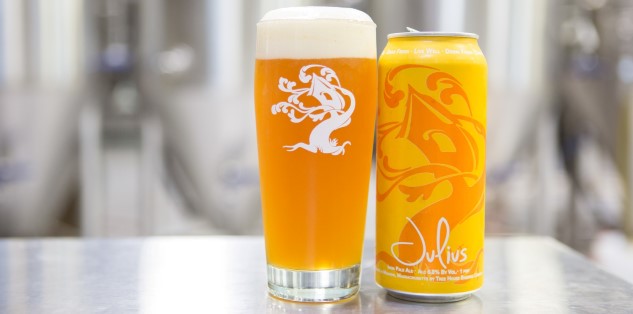
In the back half of this decade, surely there’s no single beer that has been directly emulated by more disparate breweries than Tree House’s Julius. This IPA is both emblematic of the entire hazy IPA style, but curiously separate from it in its own way. It represents what NE-IPA can be at its most approachable and universally enjoyable, but rarely is in practice among the countless copycats. It’s an argument in favor of how difficult it is to brew hazy IPA on this level, because if every brewery could replicate Julius, they all would. That’s the kind of beer we’re talking about here.
The flavor profile of Julius is like an archetype for what a lot of beer geeks would think of as the ideal hazy IPA. Soft and fluffy on the palate, it revels in big flavors of peach, orange juice and passionfruit, complemented by a very mild bitterness and more than a little residual sweetness that lends realism to the fruit impressions. At no point is this beer difficult to drink in any way—it’s not choked by plant matter, or corrosive in terms of perceived pH, or sickly sweet to the point of candy comparisons. There’s no gimmick here; just an IPA that feels both decadent and composed at the same time. As we observed when tasting for the first time:
It is, in no uncertain terms, an obscenely hoppy beer, but it’s interesting how its character comes through in a slightly different way than in some of the other turbid northeast IPAs. Yes, it’s hugely juicy and orange/stone fruit-laden (maybe clementine-like oranges?), but there’s also a lot of other, interesting influences here. It’s a perfumey nose that is somewhat herbal, but also profoundly floral—like a field of wildflowers—and quite resinous at the same time. There’s so much going on that it’s almost confounding on some level trying to process it all at once and call out distinct flavors from the melange, like trying to pick specific faces from a crowd. In spite of itself, though, what those plethora of flavors create is a beautiful whole that is shockingly easy to drink.
Triple Crossing Brewing Co. — Interstellar Burst
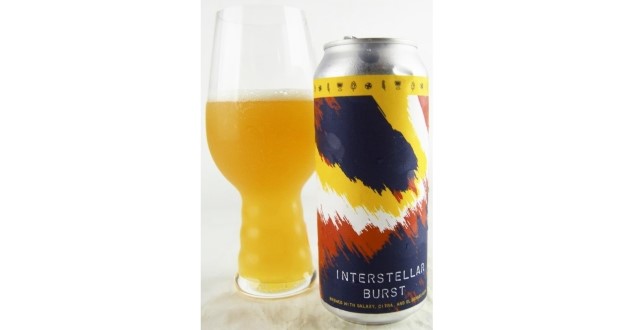
Their prominent place in the top 20 of our breweries of the decade list speaks largely to the dominance that Triple Crossing regularly displayed in Paste blind tastings—across a wide variety of styles, whether we’re talking lager, IPA or imperial stout, these Richmond stalwarts always brought their A-game. Choosing a “favorite” submission of all the Triple Crossing beers we ever sampled would be a nigh-impossible task, but one of the entries that comes to mind most immediately would be Interstellar Burst, which finished at #2 in our blind tasting of 176 DIPAs. It’s one of those beers where even the appearance seems to promise a special experience—one of those lovely, hazy beers that seems to glow from within with its own subtle shade of golden luminescence.
Much of what we said on the previous Tree House Julius entry also applies here: The best Triple Crossing IPAs, like Interstellar Burst, stand out for their lovely combination of juicy purity, welcoming balance of flavors and ease of consumption, avoiding the pitfalls that have since become common in the style. Texturally, it’s fabulous. Flavor-wise, it’s both explosive and nuanced. Like most other modern breweries known for hazy IPA, Triple Crossing releases a steady flow of new IPA/DIPA brands to tempt the drinkers who are solely driven by novelty, and although those beers are often excellent, there’s a reason why Interstellar Burst is what the brewery calls its “signature” DIPA. It has been dialed in to perfection, and we’ve almost never sampled one that is better. As we wrote then:
Suffice to say, Interstellar Burst is a particularly stellar example of NE-IPA. Impossibly smooth and luxurious on the palate, it’s like drinking a cloud—except it’s a cloud of the best juice bar smoothie you’ve never deigned to pay $9 for. From one score sheet: “Ridiculously soft and juicy, tons of passionfruit and peach. Damn.” From another sheet: “I could drink too many of these—not a bad thing.” As the latter would suggest, perhaps the most impressive thing about Interstellar Burst is that it has that rare quality of drinkability that sometimes eludes even great NE-IPAs, which can be bogged down by a combination of chewiness and residual sweetness that rob them of a chance at being called “refreshing.” Triple Crossing is making some of the best takes on this style that we’re currently able to imagine.
Westbrook Brewing Co. — Gose

Okay, so perhaps I said above that Tree House’s Julius was likely the beer that had been emulated the greatest number of times in the back half of last decade, but that’s only because most breweries prioritize IPA above all else. If a U.S. brewery did produce a gose at some point in the last 7 years, on the other hand, you can be almost certain that a portion of the Westbrook Gose DNA is represented. No other brewery has had such a massive effect in reviving (and significantly reinterpreting) this classic German style for the American craft beer audience, which in turn was a major factor in the proliferation of more easily produced kettle sours within the U.S. craft scene. Credit where credit is due to other early innovators in packaged gose such as Anderson Valley, but Westbrook’s take on the style became practically synonymous with the word, at least in East Coast beer markets. To put it another way: What Sierra Nevada Pale Ale is to the concept of “American pale ale,” Westbrook Gose is to the concept of “American gose.”
Not that the craft beer community has ever been universally happy about that fact, of course. Even now, you’ll occasionally run into the vocal undercurrent of American gose-haters, who seem to regard the Westbrook-style modification of traditional German Leipzig gose as a perversion of a classic style. We’re much more likely to see it, though, as the same sort of American evolution that has occurred in practically every other U.K. or continental beer style before it—we always turn up the volume. We did it in IPA, amping up hop rate and bitterness, making the style a showcase for American-developed hop varietals. We did it in porter, stout, pilsner and pale ale as well. Of course we were going to increase the assertiveness of gose, in this case reflected as a distinct increase in tartness and salinity, which in turn also enhances citrus/fruit impressions. It’s no wonder that so many breweries have likewise incorporated actual fruit into their goses in subsequent years, but we should note that even in a field of additionally fruited or flavored entries, Westbrook Gose still managed a #2 finish the last time we blind tasted them. As we wrote then:
The profile is classic and style-defining: Moderate tartness (it actually doesn’t seem quite as tart to us as it used to, probably because the others have caught up), with pronounced coriander notes and firm hint of salinity. Lemon citrus and a touch of grassy hops rounds out the beautifully balanced whole. It’s an American classic at this point, and still as fantastic as ever.
Wicked Weed Brewing Co. — Golden Angel
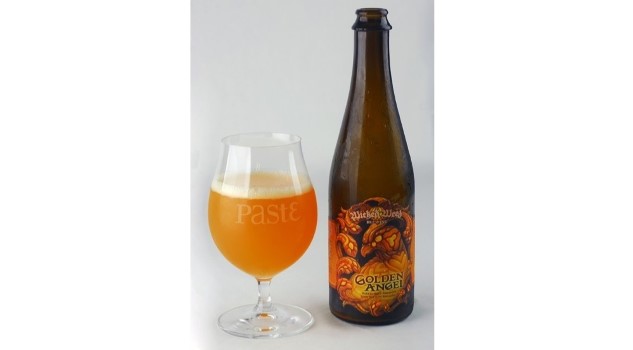
Along with the aforementioned Atrial Rubicite from Jester King, there may be no other, purely “fruited sour” offering from this decade that gave us such hedonistic delight as when we first sampled Golden Angel. A lot of the tasters at Paste have a soft spot for stone fruit sours, Peach State natives that they are, but we’ve still only ever tasted a few that hit us like this one, one of the pinnacles of wild ale that ever rolled out of Wicked Weed prior to (and after, admittedly) the company’s 2017 acquisition by AB InBev. It’s a beer that has seen some ups and downs over the years, as an infection issue resulted in a few batches that weren’t at their best, but at its height this is still likely the best apricot sour we’ve ever had, and we’ve sampled quite a few.
It’s likewise another one of those beers that manages to look as intoxicating as it tastes and smells, appearing in all reality as if you just pureed the ripest bushel of apricots imaginable to velvety smoothness, and then built a wild ale around it. Primarily fruit driven but not sparing the barnyard funkiness, Golden Angel finishes dry, as the best beers in this mold do, both rewarding the fruit lovers in the audience but not pandering to them with saccharine sweetness. We don’t go out of our way to laud praise on AB InBev breweries in these types of things, but Golden Angel remains one of the very best examples of this style of beer, and it’s one we’d always be thrilled to sample again. As we wrote then:
But underneath the fruit, there’s also a wonderfully well-developed sour beer. Tartness is medium-high and exquisitely integrated—it’s very difficult to say exactly where lactic sourness ends and the fruity acid begins. Funk and oak can be found if you’re really searching on the back end, but what it will really leave you pondering is the juicy flavor of stone fruit, both apricot and peach. Residual sweetness is right where it needs to be—Golden Angel isn’t bone dry; it presents its fruit flavors in the truest way possible. In the course of this tasting, we didn’t taste anything else that put forth a more perfect synthesis of sour beer and fruit.
Jim Vorel is a Paste staff writer and resident craft beer guru. You can follow him on Twitter for much more drinks writing.